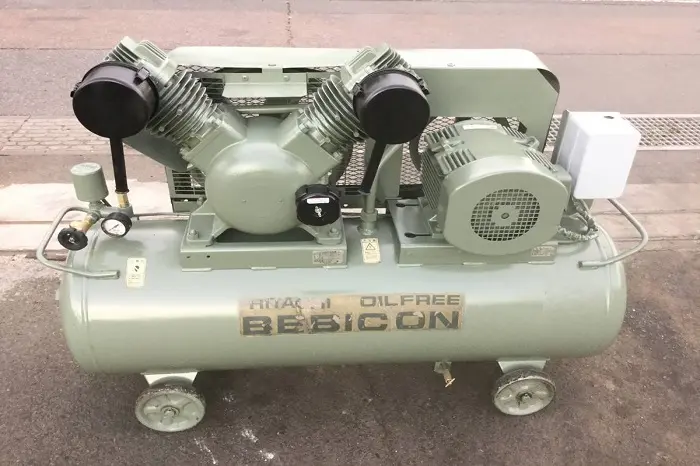An air compressor is an invaluable tool in any garage, whether for inflating tires, powering pneumatic tools, or other tasks. However, determining the best location for your air compressor can significantly affect its performance, accessibility, and safety. In this article, we will explore the best practices for positioning an air compressor in your garage, including factors to consider, ideal locations, and tips for installation.
Understanding Air Compressors
Types of Air Compressors
Before deciding where to place your air compressor, it’s important to understand the different types available:
Piston Compressors:
Often found in home garages, these are typically oil-lubricated and suitable for heavy-duty tasks.
Rotary Screw Compressors:
Common in commercial settings, these provide continuous air supply and are generally larger and more expensive.
Portable Compressors:
Ideal for occasional use, these compressors are lightweight and easy to move.
Stationary Compressors:
Fixed units designed for permanent installation and typically offer more power.
Key Features of Air Compressors
Understanding the specifications and features of your compressor will help you decide the best location:
Power Requirements: Know the voltage and amperage requirements.
Noise Level: Some compressors are louder than others; consider sound insulation.
Heat Generation: Compressors can generate heat; proper ventilation is essential.
Size and Weight: Consider the footprint and weight, especially for floor stability.
Factors to Consider When Placing an Air Compressor
1. Space Availability
Evaluate the size of your garage and how much space you can dedicate to the air compressor. Ensure you allow for enough room for:
Air Hoses and Tools: Consider the space needed to use hoses and tools without obstruction.
Walkway Clearance: Maintain a clear path for safety and ease of movement.
2. Accessibility
Position your air compressor where it is easily accessible for routine maintenance and usage:
Proximity to Tools: Ideally, place it near where you will use it most often.
Access to Power Outlets: Ensure there are electrical outlets nearby to avoid the use of long extension cords.
3. Ventilation and Heat Dissipation
Air compressors can generate significant heat during operation, making ventilation crucial:
Avoid Enclosed Spaces: Do not place the compressor in small, unventilated areas where heat can accumulate.
Consider Exhaust: Ensure there is proper airflow around the unit to prevent overheating.
4. Noise Reduction
If your garage is attached to your home or near living spaces, consider noise reduction:
Soundproofing: Use insulation or soundproofing materials to dampen noise.
Distance from Living Areas: Place the compressor farther from bedrooms or commonly used areas.
5. Safety Considerations
Safety should always be a priority:
Stable Surface: Ensure the compressor is on a flat, stable surface to prevent tipping.
Avoid Flammable Materials: Keep the compressor away from flammable substances, as it can create sparks.
Proper Drainage: If your compressor generates moisture, position it where water can drain safely.
Ideal Locations for Your Air Compressor
1. Against a Wall
Positioning your compressor against a wall can save space and provide a clear work area. This is particularly useful for smaller garages:
Benefits:
Frees up floor space.
Provides a clear workspace in front.
2. Near the Garage Door
Placing the air compressor near the garage door offers easy access for inflating tires and other outdoor tasks:
Benefits:
Quick access to vehicles.
Reduces the need to move equipment around.
3. Dedicated Workstation Area
If you frequently use pneumatic tools, consider creating a dedicated workstation:
Benefits:
Organizes tools and equipment efficiently.
Increases productivity by minimizing movement.
4. Elevated Surface
For larger compressors, consider placing the unit on an elevated surface, such as a sturdy workbench:
Benefits:
Reduces the noise level by elevating it off the floor.
Makes it easier to access pressure gauges and controls.
5. Insulated Room or Shed
If noise is a significant concern, placing the compressor in an insulated room or shed can be ideal:
Benefits:
Significantly reduces noise levels.
Keeps the compressor protected from the elements.
Installation Tips for Your Air Compressor
1. Electrical Setup
Ensure your compressor is connected to a suitable power source:
Dedicated Circuit: Use a dedicated electrical circuit to avoid overloading.
Check Voltage and Amperage: Verify that the outlet matches the compressor’s requirements.
2. Secure the Unit
Stabilize the compressor to prevent movement during operation:
Anti-Vibration Pads: Use anti-vibration pads or mats to reduce movement and noise.
Bolting Down: For larger units, consider bolting the compressor to the floor.
3. Hose Management
Proper hose management can enhance safety and efficiency:
Hose Reels: Install a hose reel to keep air hoses organized and easily accessible.
Avoid Tripping Hazards: Ensure hoses do not create obstacles in walkways.
4. Drainage and Maintenance
Plan for regular maintenance and drainage:
Draining Condensation: Position the compressor where you can easily drain moisture from the tank.
Routine Checks: Regularly check filters, oil levels, and connections.
Conclusion
Choosing the right location for your air compressor in the garage is crucial for optimal performance, safety, and convenience. By considering factors such as space availability, accessibility, ventilation, noise reduction, and safety, you can make an informed decision that enhances your workspace.
With the right setup, your air compressor will be a valuable asset, providing power for various tools and tasks, and making your garage a more functional and efficient environment. Whether you’re a weekend warrior or a dedicated DIY enthusiast, the proper placement of your air compressor will help you get the job done more effectively.
Related topics:

